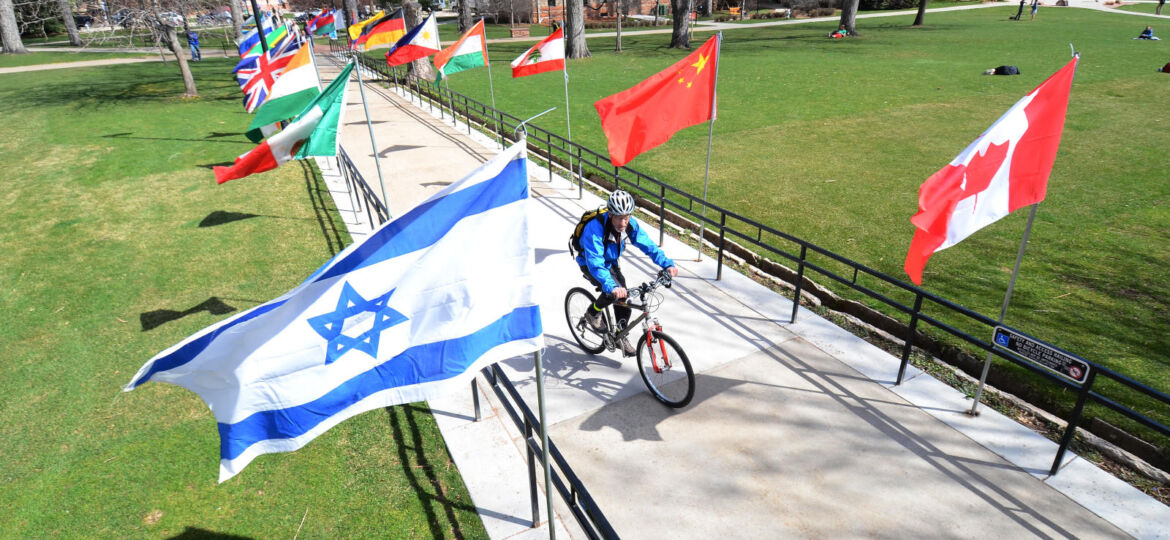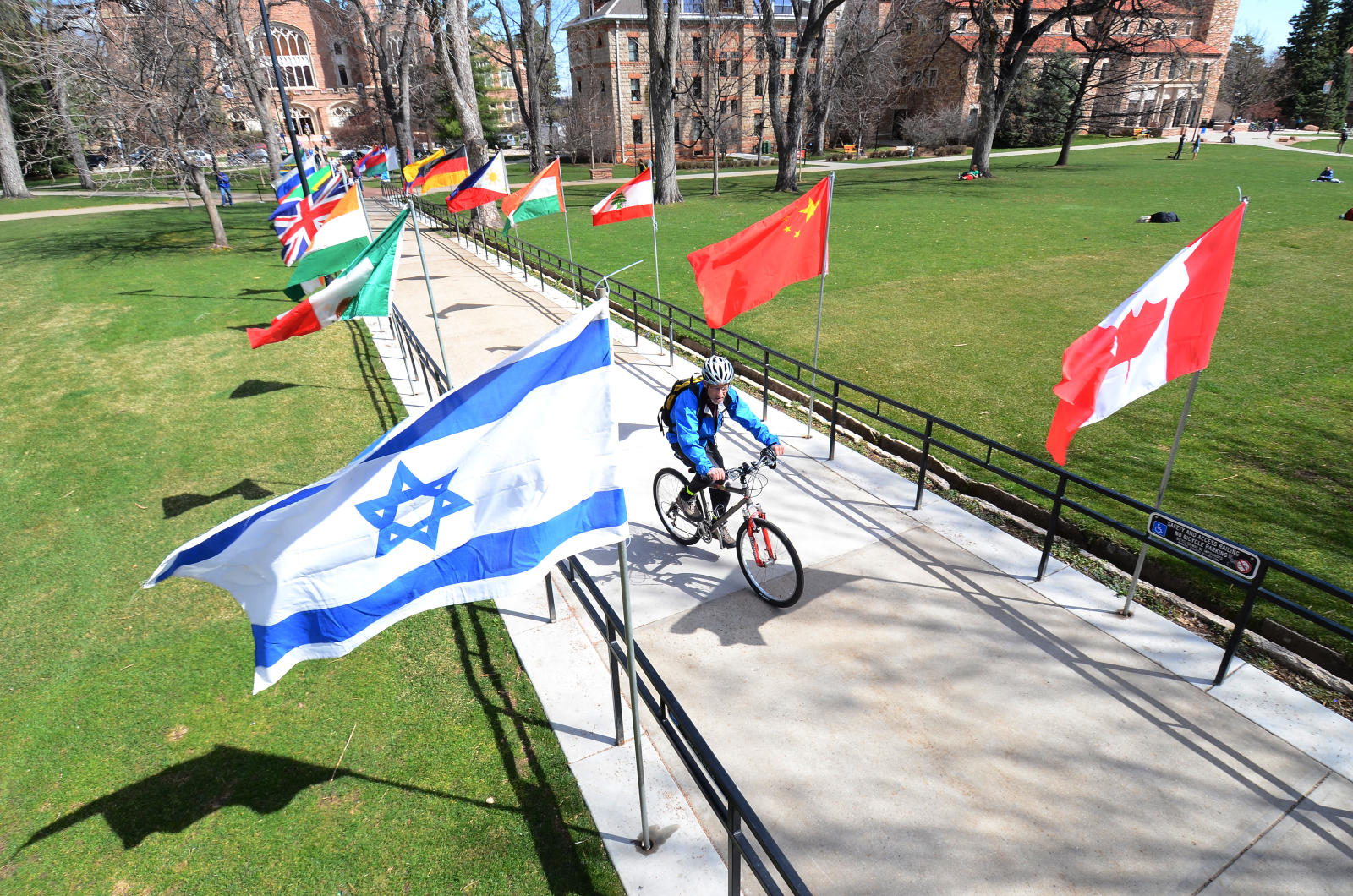
Crucial Election for International Students Futures in America
International students facing discrimination and confusion during the COVID-19 crisis and heightened racial tensions.

Imagine writing a dissertation while figuring out how to sell a car, close bank accounts and move to another continent. Like many international students, PhD student Emily’s summer was uniquely stressful, in the midst of the common uncertainty of the COVID-19 pandemic.
Being an international student on any average year can be difficult. Proving yourself worthy enough to study in the U.S. and the visa process often takes years of logistical planning. But in 2020, there are three large factors that are making it exponentially difficult.
The COVID-19 crisis struck the U.S. in early 2020, becoming widespread at the start of March, promptly ending in-person classes for students of all levels and cancelling international flights indefinitely after people rushed home for safety. Sophia Bragaglia, a junior from Sáo Paulo, Brazil, watched as all flights to her hometown were canceled when the chaos began.
“I couldn’t concentrate that week,” Bragaglia said. “It was so stressful. It didn’t seem real.”
Bragaglia knew she didn’t want to go home. After experiencing American life and the independence of being an adult, going back to her parents house in Brazil wouldn’t be normal.
According to CU’s International Student Statistics from Fall 2019, the top sending country for international students in Boulder was China, with over a thousand students studying abroad.
Many Asian students experienced racism and xenophobic remarks on campus in recent months after the novel coronavirus came to the United States. Other international students felt the effects of high racial tensions as well.
The racism that Laura experienced came from undergraduate students on CU’s campus when they spat on her friend for speaking Spanish. This type of racism and discriminatory behavior isn’t just between international students and students from the U.S. she says.
They also had to quickly make a decision — stay in the U.S. or return to their home countries around the world.
Later on, many wouldn’t get to make the decision themselves; the government chose to do that for them.
On July 6, the Trump administration issued an order that forced international students in the U.S. to find their way home if their classes were online, raising concerns for students about what the fall semester would look like. After only a few weeks of a fall semester on campus, many universities have moved to complete online learning for an unknown amount of time to protect the health and safety of their communities.
For Emily—a PhD student originally from Lithuania—the order from the Trump administration was met with confusion and anger.
“I was really angry, that was the best way to describe it. I was angry, frustrated and disappointed,” she said.
Once the emotions subsided, Emily said she thought in practical terms. What was she going to do with her lease, her car, her bank accounts?
She described that as a PhD student, she planned to be living in the U.S. for a while. She invested in the living infrastructure, and to be quickly uprooted was something she wasn’t ready for. She knew she wouldn’t have the same job opportunities in her home country. Going home would completely reverse her educational efforts and the option for an American career.
“I worked so hard to get here, and I was planning to stay here after graduation,” Emily said. “I’m trying not to think about the idea of starting my life in another country again, especially during a pandemic.”
Studying in the U.S. doesn’t happen overnight. For many students, this is a multi-year process, and even then, many are denied the opportunity. Emily said she didn’t go home this past summer primarily due to the pandemic, but the precarious climate regarding immigration policies worried her as well.

Alex Marum, a junior from Asker, Norway, experienced his fair share of difficulties heading home earlier this year as well. After multiple cancelled flights, he was met by the army when he arrived home, ordering a mandatory quarantine. He said the hardest part about finishing the spring semester was the eight hour time difference. He worked throughout the night to collaborate with American group members on final projects.
Laura , also a PhD student at CU Boulder, said the behavior exhibited from the recent policies was expected from the Trump administration, for his ideas have always been against immigration, legal or illegal.
“It has been very different after Trump became president. Everything got more charged and scary,” she said. “I do like being in the U.S. I have had many good experiences here. I met my husband here.”
Prior to studying at CU, Laura was working in Washington, D.C. She has noticed racism is more prevalent and intense in Colorado than on the east coast.
“Being an international student of color and a white international student are very different experiences. The region where you

come from has completely different experiences,” Laura said.
Thomas is from Bangladesh, a country that could not afford to socially distance or close the economy temporarily. Thomas, who is working towards his PhD from CU, said when his family calls, they don’t understand how the world’s wealthiest country, with countless facilities, has so many deaths from the COVID-19 crisis.
Thomas graduated from a Denver-based scholarship program in 2017 with a J-1 visa, a visa for approved work and student exchange programs. After his program ended and his visa expired, Thomas waited in Bangladesh for 282 days for another visa to be granted.
He had to defer his acceptance to his dream PhD program twice before his F-1 student visa was finally accepted. He says waiting that long made him too scared to visit home again.
On July 14, eight days after the Trump administration announced the international student directive, it was rescinded, The American Council on Education said. As of mid July, international students are able to stay in the United States to continue their education—whether it was online or in-person—through the entirety of the COVID-19 emergency.
While this was good news for international students, it didn’t yet warrant celebration. Social and racial justice issues, the handling of a pandemic and changing federal immigration regulations all rely on the results of Nov. 3.
“I guess you just get used to living on the edge and in terms of where my future will be, it probably will depend on the election,” Emily said.
Laura saw how politically charged the U.S. is compared to her home country of Colombia. In Colombia, wearing masks and staying socially distant isn’t blue versus red, one side against another, she said.
Thomas doesn’t carry political books on him when travelling outside of the campus area because it could be considered critical of the government.
He doesn’t have social media accounts and tries to be extremely careful with his phone calls and actions. He feels that anything he does can be criticized because of the color of his skin or the way he speaks.
“The fact that I come from a brown, poor country with poor public health made me afraid that I wouldn’t be allowed back into the country for school,” he said. “I couldn’t risk it because I am a teacher’s assistant.”
While Thomas worries for his fellow international students, he never tries to distinguish between them in the classroom. With further policies dividing students, he knows they will get singled out. International students are being seen as a threat to the job market instead of an opportunity to create diversity, he said about the administration’s policies.
The latest attacks on foreign students came last month on Sept. 24, proposing to cut visa times at four years, ending a longstanding tradition of allowing graduated students to stay in the U.S. if they continue their education, Forbes said in a recent article. Many students felt that this was absurd. PhD programs take at least five years to complete, if not more. The people that wrote these policies don’t know how graduate education works at all, said Smith.
According to the New York Times, the U.S. led the world in the number of confirmed COVID-19 cases in late May. Now, five months later, the United States is still on top, with 8.8 million confirmed cases and over 225,000 deaths.
Many international students found the Trump administration rhetoric and policies ironic, seeing as it potentially could have been less safe for students to stay in the U.S. than return to their home countries.
According to Thomas, the administration has continuously downplayed the virus. Their policies were failed attempts to make themselves look better three months prior to election day, he said.
“It is a despicable attempt to pressure universities to have classes in-person.as They want to make things look normal before the election,” he said. “The administration used international students to get what they wanted from higher education; it was not done in good faith.”
Many international students are cautiously waiting for the results of the 2020 election on Nov 3. For many of them, it could make or break years of hard work and sacrifice, ruin friendships and uproot life as they know it.
*Some of the names of students have been changed to aliases for privacy and protection.
Aliases:
- Emily
- Laura
- Thomas

